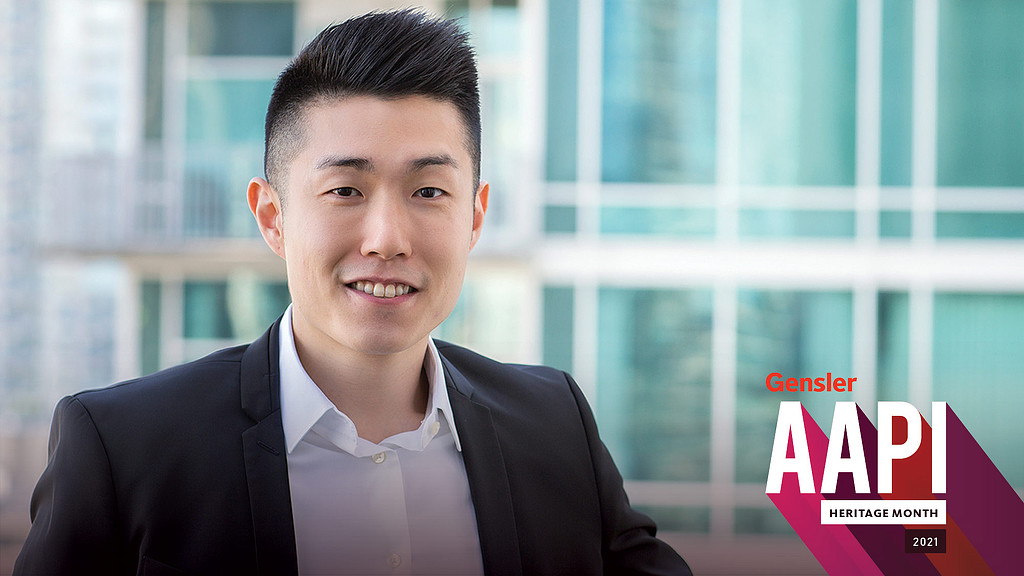Gensler Voices: Jon Park, Gensler Atlanta
May 21, 2021
This Q&A is part of a series of interviews with Gensler architects, designers, and others in the firm about their career journey, and the impact that design and architecture can have on our communities and the human experience. Here, we sit down with Jon Park, senior architectural designer, Gensler Atlanta:
What was your first introduction to the field of architecture and design?College was my first deep dive into the world of architecture. It was a five year program and we did not touch a computer until our final semester. The curriculum was super traditional and classical. Our boards were all hand drafted and watercolored. Vitruvius, Alberti, Palladio, you name it — we studied all the ancient masters. The best part was the year abroad in Rome! While I can’t remember the last time I had to draw a Corinthian column or flex the golden ratio, I appreciate and continue to build on the basic fundamentals from my university days.
What was an early experience that influenced your career?I moved a lot growing up. My father served in the U.S. Army. Every two years, he would be reassigned to another military base and take the family with him. In total, we lived in close to 10 different locations around the world. Some spots (Seoul, Korea and Würzburg, Germany) were definitely cooler than others (Statesboro, Ga. + South Bend, Ind.). While it wasn’t always fun being the new kid at school, I’m very grateful to have been exposed to different people, ideas, and cultures. While we may look different, speak other languages, and come from different walks of life, we all want the same things at the end of the day — to be safe, to be loved, and to live fulfilling lives.
How has your career shaped your understanding of the world?Architecture projects are like relationships. The projects individually can span years and takes time to build experience and familiarity. Often, when you’re in the middle of the project dealing with the daily grind, each interaction and moment can feel random and disconnected. It isn’t until you’ve slowed down to reflect that you begin to see how each of the dots connect. As with life and relationships, nothing is linear and everything requires time, patience, and a lot of love. My career has taught me that you can’t rush what’s good and sweet — all you can do sometimes is enjoy the process and be more present in the now.
How can architecture and design advance wellness, equity and inclusion?Architecture isn’t just about buildings serving a unilateral purpose for occupants. The buildings we design become spaces, and the spaces we design ultimately influence interactions and experiences. Truly accessible design is something that I’m constantly thinking about. Most recently, with a local project here in Atlanta, where our client pushed us to think further on exactly this. If I remember correctly, his prompt was, “How do we create an environment that is attractive for Fortune 500 companies but is also approachable for a single mom who’s getting off of the MARTA train and needing to pick up groceries on the way home?”
Those words have stuck with me for the projects we’ve worked on since then. We all know that design is a universal concept and has the power to build bridges where there were once gaps. The opposite is unfortunately also true — that design has the power to create division. As architects, if we can push ourselves and our clients to think about buildings as tangible representations of our social values and norms, I really think we can change our communities to move towards building trust and inclusivity.
What role does architecture and design play in to continue to attract, and ensure inclusivity, in future generations?Architectural stereotypes (especially about the people) are real and out there. The last few months that we spent mentoring Florida A&M University students through the Gensler Historically Black Colleges and Universities (HBCU) Student Design Charrette program really reinforced for me that we have a real responsibility to make architecture and design approachable and accessible for all. Each of us has a unique story and there’s value in sharing our experiences and letting future generations know that there are architects and designers who look like them and think like them.
The most important thing I've learned as an architect/designer is...We should always start by listening. Design is inherently a tool that can serve and elevate people and communities. It’s surprising what you can learn and be inspired by just by choosing to listen first.
If you could choose anyone, who would you like to design a project for?My parents. My mother and father gave it all up — their friends, their country, their dreams — for me. They traded in the familiarity and comforts of their community and homeland of South Korea for hardship, struggle, and inequality in the U.S. in hopes of giving me a better life. I honestly wouldn’t be here, let alone pick up architecture, without their love, selflessness, and sacrifice. The least I could do is to build them a house or two for starters, right?
Name a building or space that every designer should see in person.Piazza della Rotonda. It was one of my favorite spots in Rome during my study abroad program. I’d usually wander out there between classes to find a good place to sit near the fountain and stare off at the Pantheon. Every time, it was such a surreal experience to see modern day life unfold against the backdrop of all this rich history.
For media inquiries, email .
